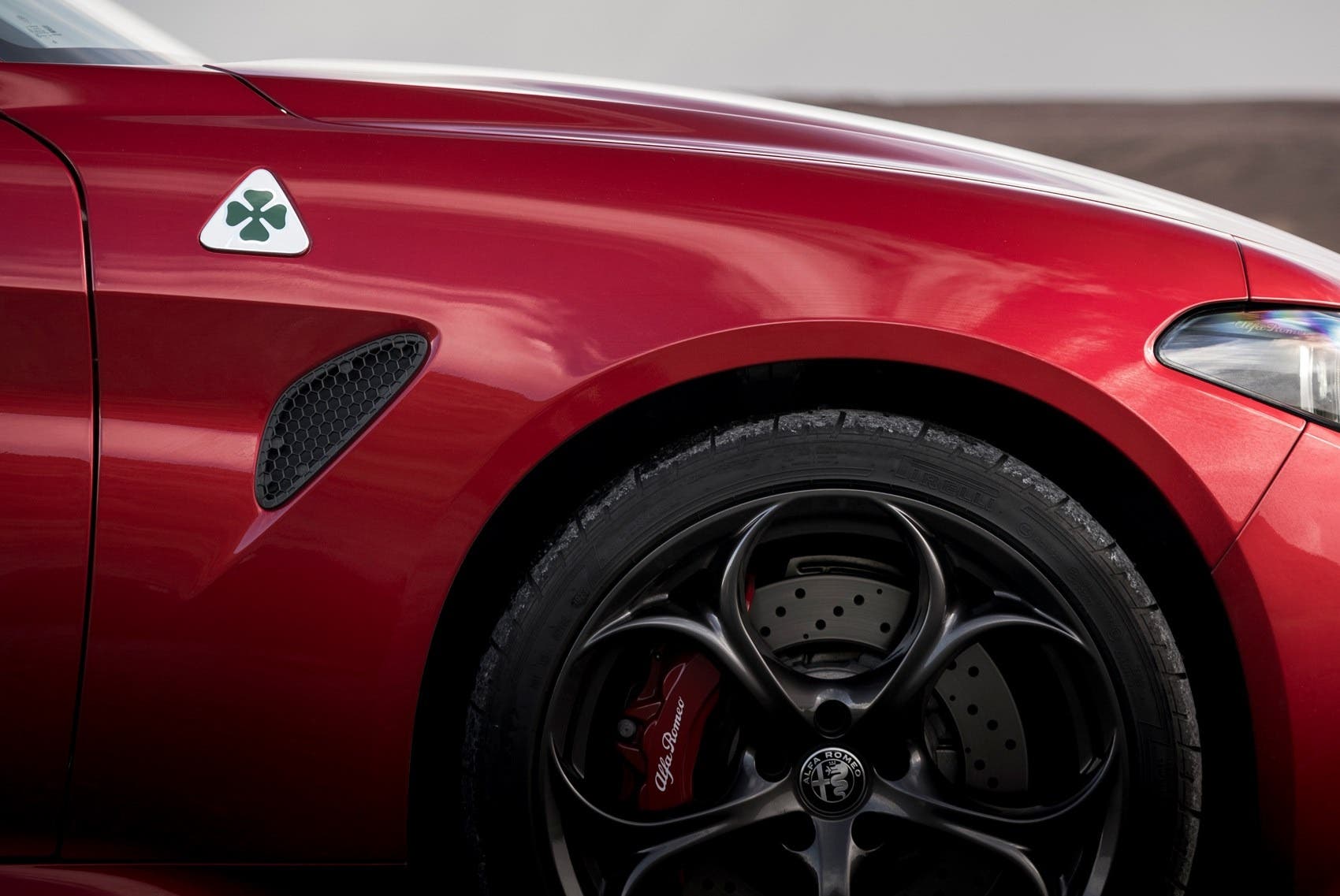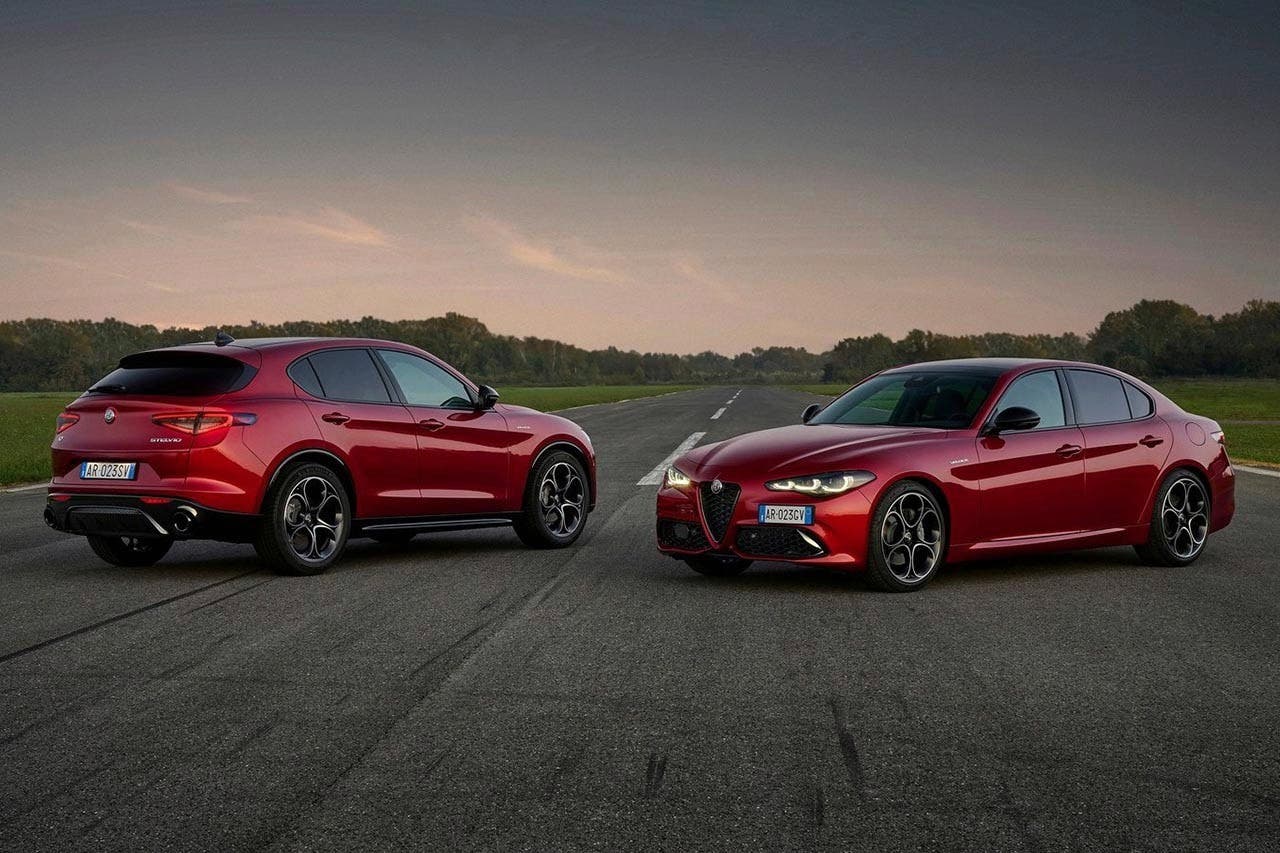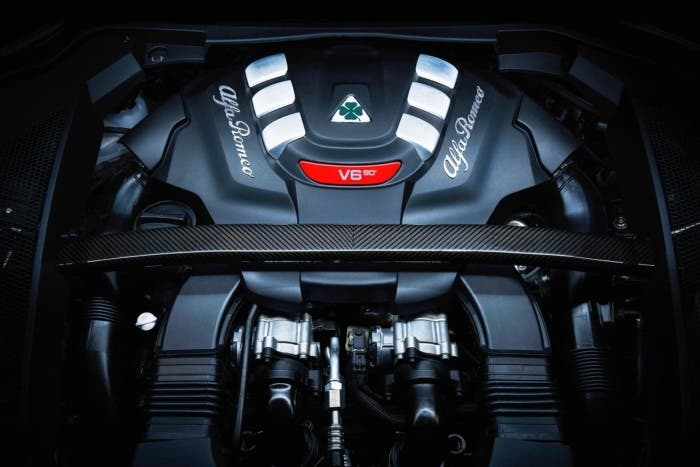In Fiorio’s words, the 2.9-liter V6 may still have a future in the new Stelvio and Giulia
Changing course for Alfa Romeo Stelvio and Giulia: Fiorio’s words
The new Alfa Romeo Stelvio and Giulia, expected in 2025 and 2026 respectively, may not be exclusively electric as originally planned. Although original plans called for 100% electric Quadrifoglio versions with more than 1,000 horsepower, recent statements by Cristiano Fiorio, Alfa Romeo’s marketing and communications manager, suggest a possible change of course.

Indeed, in an interview with Car Magazine, Fiorio hinted that the legendary 2.9-liter twin-turbo V6 engine may still play a role in the future of these models. This opening to the hybrid would represent a significant breakthrough, considering the initial focus on total electrification of the Quadrifoglio range. “Everyone expresses a desire for an Alfa Romeo with the Quadrifoglio. This is very clear, because the Quadrifoglio represents the pinnacle of the brand, and we will continue to maintain it forever. It’s a matter of course.” But there is an important addition: “Personally, I don’t see an electric Quadrifoglio. I see a Quadrifoglio that makes the sound of a real engine. Maybe in five years things will change, but for now the Quadrifoglio, for me and for us, should be something with a roar.” Fiorio concluded, “This is something we hear from fans and customers, because the demand for the Quadrifoglio in many markets is really interesting. We have to continue to offer what customers want.”
the 2.9-liter V6 for Alfa Romeo Stelvio and Giulia
The possible introduction of hybrid versions would flank the electric variants, giving enthusiasts more choice. The 2.9-liter V6, known for its exhilarating performance, could be paired with an electric system to reduce emissions without sacrificing the sporty character that distinguishes Quadrifoglio models.
It remains to be seen how Alfa Romeo will make this vision a reality. The hybrid option could provide an ideal bridge to a full transition to electric, allowing the brand to keep its sporting heritage alive.
In fact, Fiorio, urged by Car Magazine‘s reporter to reveal details about the possible overhaul of Alfa Romeo’s 2.9-liter V6 to bring it in line with standard emissions regulations and extend its life in future Stelvio and Giulia, Fiorio responded cautiously. He avoided giving a direct answer, saying that revealing whether or not the upgrade was underway would mean unveiling the engines in the upcoming Giulia and Stelvio in advance. However, he admitted that the idea of an update is not far from the company’s considerations at all. He went on to point out that for large cars like the Giulia and Stelvio, which aim for high performance, a six-cylinder engine would be the most logical choice. With an enigmatic smile, he added that, perhaps, a six-cylinder might be the simplest solution.

STLA Large for Alfa Romeo’s 2.9-liter V6 engine
Cristiano Fiorio went on to suggest that Alfa Romeo’s powerful 2.9-liter V6 engine could find a place in the STLA Large architecture, the platform that will support future Stelvio and Giulia models. He explained that the platform is designed to be versatile and adaptable to different types of powertrains, not limited exclusively to electric. This means that the integration of the V6 would not present technical obstacles.
In addition, Fiorio was critical of the increasing complexity of modern cars, announcing plans to simplify the driving experience with the new Stelvio and Giulia. He pointed out how the excessive presence of buttons and technologies can distract attention from driving pleasure, which he believes should be the essence of an Alfa Romeo. Fiorio stressed the importance of technology that supports safety, but reiterated that the brand’s goal is to create cars that offer an engaging and intuitive driving experience, without requiring excessive familiarization with complex technological interfaces.

